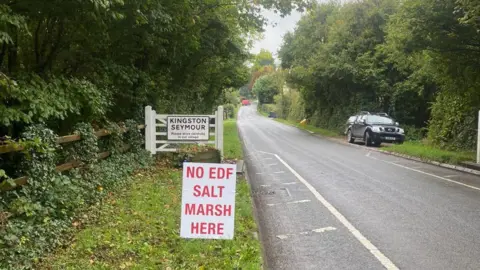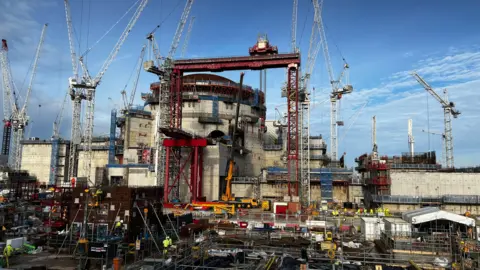EDF delays saltmarsh plans for Hinkley Point C
 LDRS
LDRSEDF is delaying the consultation into plans to turn land into a saltmarsh until later this year to "carefully evaluate the best approach."
The power company, which is building Hinkley Point C, wants to create 340 hectares of new saltmarsh habitats along the River Severn at Kingston Seymour, Arlingham, Littleton and Rodley.
It would be to compensate for the 44 tonnes of fish expected to be sucked into the power plant's cooling systems each year.
Farmers and the local communities have expressed "dismay" at the plans.
A letter sent from EDF to people in the areas affected said: "We have listened carefully to all views and the feedback has provided us with a great deal of insight as we consider what proposals to put forward in our public consultation."

Claire Stuckey, whose parents' land and business faces becoming part of the Kingston Seymour saltmarsh, said: "We have unanimous community opposition and significant evidence it won't work. It's their decision what they are going to do."
Some farmers and landowners found out their lands were being looked at in September 2024, when they received letters from EDF.
In the most recent letter, sent on Monday, the power company said it believes "community support is essential" for long term national infrastructure projects.
Ms Stuckey said that EDF's statement that they needed more time to look at their options "goes against the original excuse for their heavy-handed approach".
EDF says it has to find a way to compensate for the deaths of fish in its cooling system as it draws in water from the Severn Estuary.
The planning permission for Hinkley Point C originally stipulated that it would use loudspeakers by the water intakes on the seafloor to scare off fish.
The energy company said it would be dangerous for divers to install the speakers and instead proposed creating saltmarshes to compensate for the dead fish.
EDF continued: "We will review the potential for any emerging technology to further protect fish without risking the lives of divers in the dangerous waters of the Severn Estuary."
Follow BBC Somerset on Facebook and X. Send your story ideas to us on email or via WhatsApp on 0800 313 4630.
